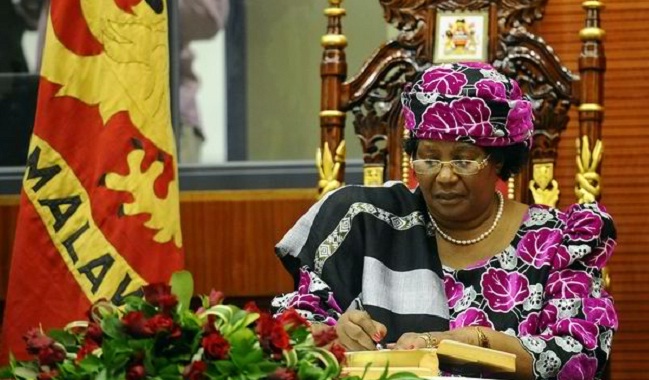BLANTYRE, Malawi , Jun 27, 2011 (IPS) – In Malawi’s administrative and commercial capitals, Lilongwe and Blantyre, two things are clear, especially at night: blackouts and the sound of generators in various workplaces.
Power interruptions continue to affect both private and public sectors. And captains of industry insist that the Malawi/Mozambique interconnector power project must come into effect. The interconnection is expected to allow Malawi to have access to the Southern Africa Power Pool (SAPP) market through the Mozambique interconnected grid with Zimbabwe and South Africa.
But government has objected to the power deal arguing that it will be costly because taxpayers will have to cough up a lot.
Opposition legislators, though in minority, have teamed up in calling on President Bingu wa Mutharika to have a re-think of the power interconnection bill so that the project is brought into effect.
The Malawi and Mozambique interconnection power bill entails that Malawi import electricity from Mozambique’s Cahora-Bassa Dam to avert power shortages at a cost that was expected to be financed by the World Bank’s 200 million dollar package for a few years and later Malawi itself.
The power bill deal between the two countries would have seen a power transmission line constructed from the Matambo sub-station in Mozambique to Blantyre West in Malawi. If finalised new lines would transmit at least 200 megawatts (MW) to bolster the country’s energy supply.
Malawi government authorities insist the interconnector deal is costly
Initially, Malawi was expected to pay at least 57 million dollars just for other contingencies and associated costs while Mozambique would have paid 46 million dollars. The 57 million dollars is still deemed expensive, considering the deteriorating agro-based economy.
Malawi’s minister of energy and natural resources, Grain Malunga says, it is too costly.
“We have put the power interconnector bill on hold to pave the way for talks bordering on how much the governments of Lilongwe and Maputo are going to share,” Malunga says.
He says the cost includes payment for the transmission lines, extension of the project from Matambo and other contingencies in Mozambique to Malawi’s Blantyre West.
“As it stands now, Malawi is supposed to foot transmission costs ranging from the erection of poles to the actual cost of electricity. We want Mozambique as per the SADC Power Pool to do its part,” Malunga says.
“Therefore, we want to reach an agreement with Mozambique to ensure that Malawi is obliged to pay costs covering a distance of 76 kilometres likewise Mozambique to pay costs covering 124 kilometres in line with the SADC Power Pool.” Malunga tells IPS.
The take of ESCOM looks positive towards the deal despite governments’ objection
Officials at the public power utility, the Electricity Supply Corporation of Malawi (ESCOM), in response to questions sent by IPS, say the project is commercially and financially viable as it will bring about social and economic development for Mozambique and Malawi. But Malawi’s objection to the deal casts doubt on the development.
Presently, the demand for power in Malawi for about 180,000 clients and private and private sectors is about 300MW. However, the available power generation capacity is 266MW.
ESCOM officials reveal that up to 98 percent of electricity is obtained from power plants located on the Shire River in Chikhwawa, south of Malawi. This is with the exception of the Wovwe mini-hydro plant in Karonga, in north Malawi, which is close to Tanzania. And authorities point out that the country’s hydro potential is estimated at over 1,000MW.
According to a study by the Millennium Challenge Account-Malawi (MCA-M), projections for generation requirements for 2010, 2015 and 2020 are 408MW, 603MW and 829MW respectively.
This is in line with a survey done by the Malawi Business Climate Survey (MBCS), which has spoken out about the erratic power supply as being one of Malawi’s major challenges of doing business or attracting foreign investment.
According to the findings by MBCS, cuts in power transmission have contributed to losses beyond the minimum acceptable level of seven percent. The MCA-M estimates that the country is losing 215.6 million dollars a year due to the power outages.
The view of business captains and the use of other sources to avert power blackouts
Furthermore, business captains under the Malawi Confederation of Chambers of Commerce and Industry (MCCCI) estimate that the business sector is losing up to 500,000 dollars daily due to the power cuts and electricity shortage.
This is why MCCCI’s members are in support of the interconnection power project. They hope it will reduce the power outages Malawi currently faces – to the advantage of local people and businesses.
“SAPP has 12 member countries out of the 14 SADC states, and Malawi is the only country which is not yet connected to the regional grid system. This is not on, considering the major power hiccups that have hit the country,” economist, Collen Kalua of the Chancellor College of the University of Malawi says.
Kalua says government should not object to the deal when there are indications that the deal will benefit the country.
“When business captains cry for the power interconnection project, government has to zero in to curb power blackouts by formalising the deal with Mozambique,” Kalua states, adding that government can increase revenue collection only if companies have uninterrupted power supply.
In a bid to have other sources of energy, the authorities in conjunction with international experts are investigating the possibility of Malawi exploiting coal-driven electricity generation. (END)
By George Mhango





No comments! Be the first commenter?